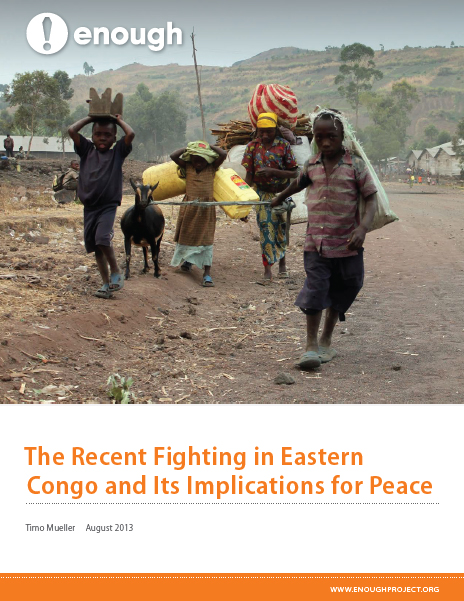
On Sunday, July 14, 2013, fighting between the Congolese army and the M23 rebel group resumed on the outskirts of Goma in eastern Congo, with each side blaming the other for initiating the hostilities. Following earlier skirmishes in May 2013,1 the fighting is now the heaviest it has been since M23 temporarily occupied Goma last November. Alarmed by the escalation, the United Nations’ peacekeeping mission, the U.N. Organization Stabilization Mission in the Democratic Republic of the Congo, or MONUSCO, put all of its agencies on high alert.
Visiting the front lines during the first three days, the Enough Project witnessed many rounds of intermittent artillery fire north of Kanyaruchinya, a few kilometers north of Goma. With frequent lulls, the warring parties traded mortar fire late into July 16. A shell fell as close as 100 meters from Goma’s airport, and at least 1,000 people escaped the fighting in Goma and found temporary shelter in neighboring Uganda, according to the United Nations. After a respite the following morning, the fighting resumed in the afternoon, taking its first reported toll on a local news crew. A driver was wounded by an incoming mortar attack, and an accompanying local journalist lost consciousness.
The challenges of reporting in times of conflict are manifold. Rumors spread like wildfire in Goma and on the Internet, making it increasingly difficult to discern facts. On July 15, for instance, Congolese government spokesperson Lambert Mende boasted that the army managed to kill 120 M23 rebels while accruing as few as 10 casualties. On the following day the army presented two dead corpses and a wounded man to the Enough Project, arguing that they were M23 fighters. The army could not, however, substantiate its claims. Later, on July 24, 10 days into the fighting, M23 claimed it had killed more than 400 soldiers of the Congolese army. Surprisingly, international news outlets cited both estimates without much second-guessing, despite the lack of independent verification.

Read or download the Infographic Explantory Note (PDF).

